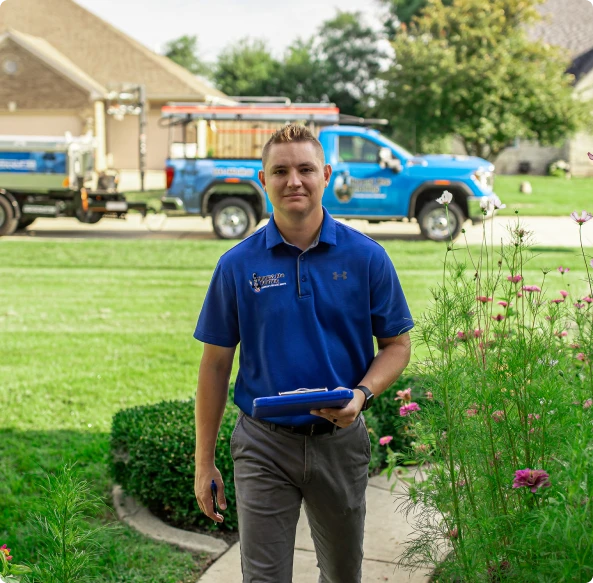Preparing Your Roof for Heavy Rains
Preparing Your Roof for Heavy Rains
Extreme weather events have, unfortunately, become more and more common. Summertime across the United States often brings the threat of heavy rains along with the warmer temperatures everyone looks forward to. Nothing exposes problems with a roof faster than record rainfall. What can homeowners do to make sure their roof can weather the storm?
While some roof leaks require attention from a professional roofer, there are several steps home and business owners can take to prepare their roofs for rain.
Steps to Protect Your Roof
There are some proactive steps you can take to prevent damage due to heavy rain.
- Clean your gutters. Gutters help divert water away as it drains from the roof during a storm. Clogged gutters can trap water and cause it to pool on the roof, damaging the shingles and wood over time. Be sure to check gutters and downspouts with each season and remove any clogs.
Check nearby trees. Powerful wind and rain can cause dead trees and broken limbs to fall on and damage your roof. Safely remove dead trees (this may require calling a professional) and make sure any overhanging branches are trimmed before the rainy season begins.
Fix roof leaks immediately. Often, minor leaks can be repaired before major problems occur. The best way to find them is with a thorough inspection.
Perform an Inspection to Detect Roof Leaks
The first defense against leaks is to inspect your roof regularly—experts recommend doing so at least twice a year. This can help you identify minor issues before they cause a problem and become difficult to repair. Becoming familiar with how your roof looks makes it easier to spot changes or problems quickly. When you’re on a ladder cleaning your gutters, this is a great opportunity to get a close up view of your roof.
Many roofing companies offer a free roof inspection that will identify any issues and help you create a repair and maintenance plan. However, there are some inspections you can conduct first.
SPOT ROOF LEAKS IN THE ATTIC
If your home or building has an attic, this is the first place that water damage will be apparent. Any signs of moisture, mold, or rot in the attic can be a sure sign that a roof repair is necessary.
CHECK FOR DEBRIS ON THE ROOF
Next, check the outside of the roof. Fallen branches, algae, moss, and even piles of leaves can harbor moisture and degrade the quality of your roof. You should be able to spot these issues from the ground. If it’s safe to do so, you should clear these away. Moss may require some special attention to remove it completely, such as using a moss killing treatment and a brush.
CHECK FOR MISSING OR DAMAGED SHINGLES
Intact shingles are the first defense against roof leaks, since missing or damaged shingles can let water seep through the sheathing beneath. Over time, heat from the sun and hot air in the attic can cause shingles to warp, buckle, or curl. This type of damage is notorious for causing leaks.
If you have a metal roof, check for holes, lifted fasteners, or areas of corrosion and rust.
When a large portion of the shingles are missing or the roofing material is damaged, it’s probably time to consult a professional about replacing the roof.
LOOK BEYOND THE SHINGLES
Roof leaks can also be caused by damage to the flashings around the chimney, vent pipes, sky lights, and other components that come up through the roof. Flashing is a thin metal material placed under the shingles to redirect water from these fixtures so that it doesn’t leak into your house. Damaged or missing flashings are a warning sign for roof leaks.
Make a Plan for Roof Repair
Once your inspection is complete, it’s time to create a plan for repairing any damage ahead of the rainy season. If the problems are minor, you may be able to handle the repairs yourself. Before you get started, it’s important to remember: Roof repairs can be dangerous. When in doubt, consult a professional.
The same is true when the damage is extensive. When this is the case, look into getting a consult from a contractor that specializes in roof repair.
When Replacing a Roof is the Best Plan
While there are several steps homeowners can take to prepare a roof for heavy rain, including completing minor repairs, sometimes a roof simply needs to be replaced. Maybe it’s reached the end of its useful life (about 20 years for an asphalt roof, for example), or maybe damage from winds or fallen tree limbs is severe. Roof repairs can cost less than a replacement in the short term, but over time those costs will add up, and a faulty roof can cause expensive damage to the rest of the home or building. Replacing a failing roof can be the best way to ensure your roof is safe while avoiding the added-up costs of multiple repairs or additional damage.
Ask the Experts
If your roof is leaking or you’re concerned that it may be damaged, contact us immediately to schedule a home visit with one of our local roofing experts. The trusted professionals at Honest Abe Roofing can give you a thorough evaluation and diagnosis of your current roofing system. We’ll give you a clear plan for repairing or replacing your roof so you can breathe easy when the rain starts to fall.
